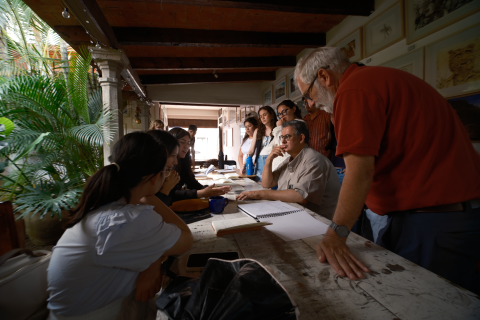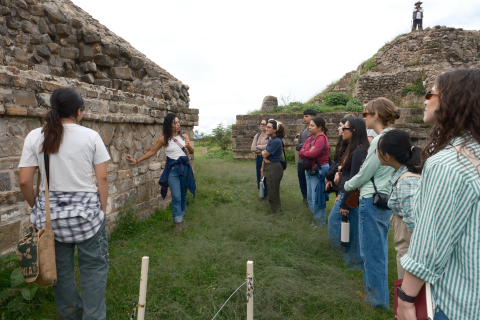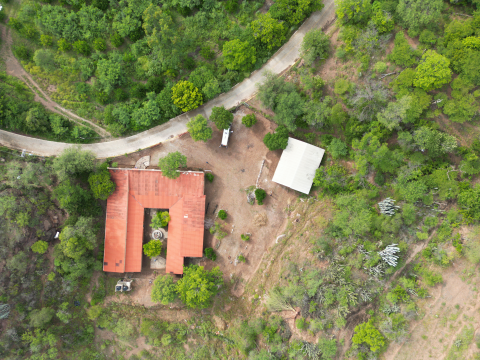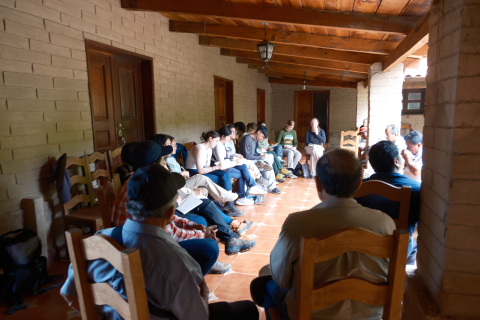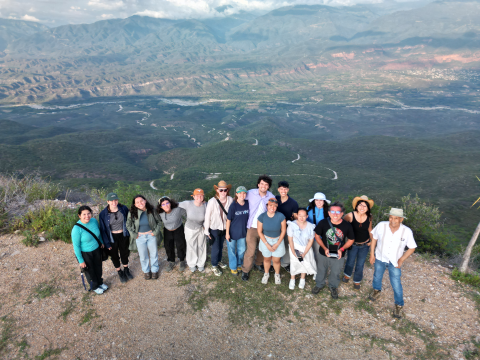Designing Community-Centered Heritage Spaces in the Tehuacán–Cuicatlán World Heritage Site

A Valley of Global Significance
Nestled in central-southern Mexico lies the Tehuacán-Cuicatlán Valley, one of the world’s most remarkable biodiversity hotspots and a landscape deeply connected to the origins of Mesoamerica. Recognized by UNESCO for its outstanding natural and cultural universal value, the region stretches across southeastern Puebla and northern Oaxaca states and is celebrated for its extraordinary plant diversity, sophisticated ancient water-management systems and its long-held status as a cradle of early agriculture.
Immersive Learning in Quiotepec
Students in Benjamin Ibarra-Sevilla’s Advanced Design Studio traveled to the valley to investigate how its World Heritage designation can support sustainable, locally rooted economic development. Their work centers on Quiotepec, a rural community in the Cañada region of Oaxaca, located within the Tehuacán-Cuicatlán Biosphere Reserve. With its rich pre-Columbian heritage, dramatic topography and exceptional biodiversity, Quiotepec offers an ideal setting for students to examine how design can strengthen community vitality while honoring cultural and environmental values.
Designing with—and for—the Community
Drawing observations from the field and direct conversations with residents, students are crafting proposals that rely on locally appropriate building technologies and sustainable practices. Their work seeks to reinforce the community’s identity, protect the surrounding environment and elevate the cultural heritage embedded in the landscape.
This immersive studio experience was made possible through the support of LLILAS, which is sponsoring its second student field program in the region.
“LLILAS is dedicated to deepening understanding of Latin America through innovative research and outreach. Our partnership with the School of Architecture has grown through the leadership of Professor Benjamin Ibarra-Sevilla, whose work connects design with cultural heritage and community engagement. With LLILAS support, his Advanced Studio immerses students in meaningful, context-driven design proposals. We are proud to foster this collaborative and engaged scholarship," said Adela Pineda, Director, LLILAS.
Bringing Heritage Home
Students are collaborating with several local partners, including the municipality of Santiago Quiotepec, to envision a visitor center that includes a small museum dedicated to housing and interpreting local archaeological artifacts.
“Right now, the archaeological findings from the region are stored in Oaxaca City or Mexico City,” said Ibarra-Sevilla. “The proposals the students are developing are significant because they imagine ways for this heritage to be interpreted and experienced within the communities where it originated. Students are seeing firsthand how their work can have a real and lasting impact.”
The concept for the visitor center emerged directly from community conversations. Residents expressed a strong desire for a dedicated space to display and protect artifacts connected to the region’s deep history. This interest has inspired the formation of a local committee to guide the museum’s future.
Supporting Local Needs
Another priority shared by residents is the need for additional lodging. As a World Heritage region, the valley often receives visiting students and researchers, yet accommodations are limited. Most visitors either set up temporary camps or stay in larger towns such as Cuicatlán. In response, students are designing a modest, environmentally responsive hotel that relies on local materials and sustainable construction techniques.
The studio emerged from a partnership with the Fundación para la Reserva de la Biosfera Cuicatlán, A.C., which is developing and implementing a management plan to establish a regional network of cultural services and heritage-based activities. This initiative seeks to highlight the valley’s cultural and natural value and to envision a comprehensive strategy that leverages the site’s unique features to create meaningful opportunities for sustainable economic development.
Toward a Shared Future
At the end of the semester, the studio will present seven design proposals to the community with concepts that reflect architectural exploration and a shared vision for the future of the Tehuacán-Cuicatlán Valley. Beyond their technical rigor, these projects aim to amplify community-led efforts to imagine new possibilities for conservation, education, and sustainable economic development. By working in close dialogue with Indigenous residents, the studio seeks to support local initiatives that elevate the region’s cultural identity and ensure that the stories of underrepresented communities are told by and for the people who have shaped this landscape for generations. The hope is that these proposals will serve as catalysts for fundraising, strengthen the community’s long-term planning efforts and offer a roadmap for projects that promote opportunity across the valley.
